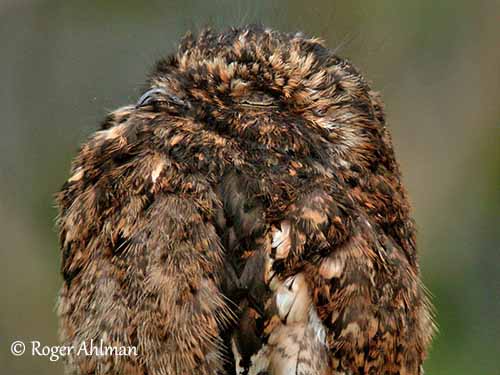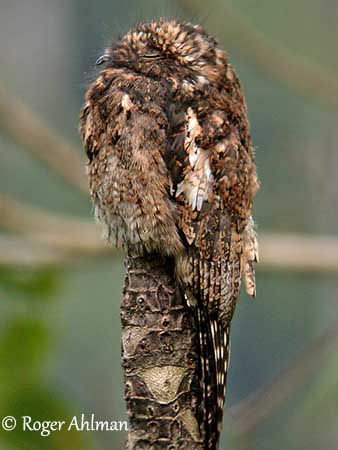
Fr: Ibijau des Andes
Ang: Andean Potoo
All: Andentagschläfer
Esp: Nictibio Andino - Biemparado Andino
Ita: Nittibio delle Ande
Nd: Andesreuzennachtzwaluw
Sd: andinsk poto
Photographer:
Roger Ahlman
Pbase Galleries Peru and Ecuador
Text by Nicole Bouglouan
Sources:
HANDBOOK OF THE BIRDS OF THE WORLD Vol 5 by Josep del Hoyo-Andrew Elliott-Jordi Sargatal - Lynx Edicions - ISBN: 8487334253
NIGHTJARS - A Guide to Nightjars and Related Nightbirds – Nigel Cleere and Dave Nurney - Yale University Press - First Edition (August 11, 1998) - ISBN 10: 0300074573 / ISBN 13: 9780300074574
A GUIDE TO THE BIRDS OF COLOMBIA by Steven L. Hilty and William L. Brown - Princeton University Press – ISBN 069108372X
L’ENCYCLOPEDIE MONDIALE DES OISEAUX - Dr Christopher M. Perrins - BORDAS - ISBN: 2040185607
BirdLife International (BirdLife International)
Neotropical Birds – Cornell Lab of Ornithology
Andean Potoo
Nyctibius maculosus
Caprimulgiformes Order – Nyctibiidae Family
INTRODUCTION:
The Andean Potoo is a forest bird usually found in humid cloud forests, between 1800 and 2800 metres of elevation, whereas the other species are limited to the tropical lowlands.
Like other potoos, it roosts motionless during the day, similar to the large branches on which it perches. Its cryptic plumage blends with the tree-bark pattern.
The Andean Potoo is found in the Andes of South America.
DESCRIPTION OF THE BIRD:
Biometrics:
Length: 34-38 cm
Weight: 145-195 g
The adult is dark brown overall (never grey), variably streaked white, buff and blackish. No collar around the hindneck. There is a variable amount of white on the scapulars, forming a pale wing patch.
On the head, crown and nape are brown with narrow white and buff streaks, and broad blackish streaks. Chin and throat are white to greyish-white.
The bill is black. The eyes are yellow. Legs and feet are brownish-white to pinkish.
The female resembles male, but she has the white wing patch tinged with buff. Her plumage appears buffier overall, mainly on upperparts and breast.
The juvenile is not described.

RANGE:
The Andean Potoo is found in several scattered areas in the Andes, from W Venezuela, W Colombia, through E Ecuador, W to SE Peru and W Bolivia.
HABITAT:
The Andean Potoo occurs in humid montane cloud forests with openings. It often perches on snags in the canopy. This species is visible between 1800 and at least 2800 metres of elevation.
CALLS AND SONGS: SOUNDS BY XENO-CANTO
The Andean Potoo’s call is a descending three-note call, uttered by the female prior to copulation “aah aah aah”.
The song is a loud, repeated “raa-aa” or “aah-aa”. It can be repeated every 8-10 seconds and may last 2-3 minutes. It is given from perch by the male.
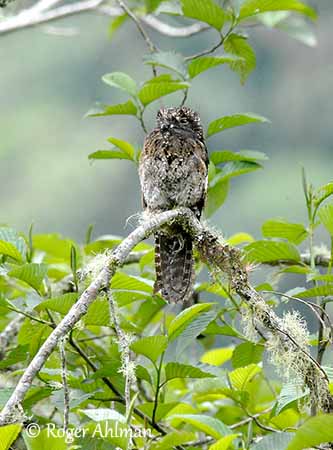
BEHAVIOUR IN THE WILD:
The Andean Potoo feeds on insects such as beetles and moths. It is nocturnal and forages at dusk and at night. It hunts by sallying from an exposed perch, catches the prey and returns to the same or another perch between two sallies. The prey is engulfed whole on the wing.
Like other potoos, it roosts on large branches during the day. The perch often protrudes above the canopy. If the bird is threatened, it adopts a cryptic pose with flattened feathers, raised head and bill pointed upwards. Thanks to its plumage, it becomes invisible and similar to the bark of its perch. It is often seen alone, but sometimes in pairs.
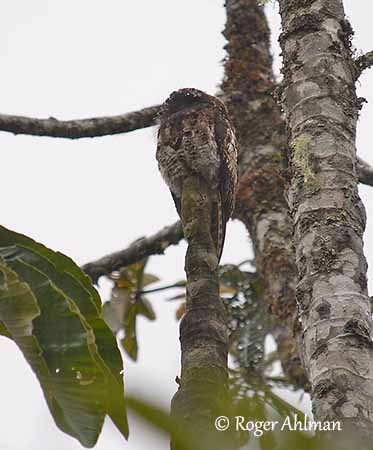
The Andean Potoo appears to maintain the territory by singing. It sings from several perches throughout the territory, and the different song-posts can be 50-75 metres apart or more.
Prior to copulation, the female gives “aah aah aah” calls and alights on one of the male’s perches. Then, the male joins her and the copulation occurs.
The Andean Potoo is probably sedentary in its range.
The flight is silent and the potoo flies like a huge butterfly.
REPRODUCTION OF THIS SPECIES:
This behaviour is poorly known for this species, but we can suggest that it is similar to that of other potoo species.
They are monogamous and both adults share all the nesting duties. The potoos do not build a nest, and the egg is usually laid in a natural depression in tree, often the scar left by a broken branch, or at top of a broken stub. There is no additional nest material.
The period is unknown, but from an observation, copulation occurred in September in Ecuador.
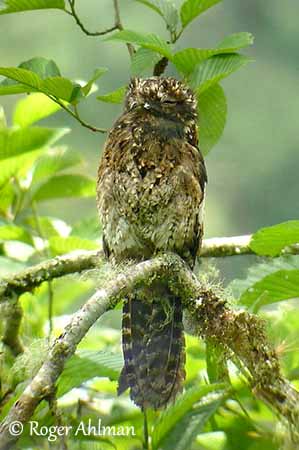
The female usually lays a single egg and both parents incubate. The incubation lasts at least 33 days and the young bird fledges between 44 and 50 days after hatching.
PROTECTION / THREATS / STATUS:
The Andean Potoo is usually uncommon throughout the range, and the species is threatened by destruction of the habitat.
The population has not been quantified, but currently, the Andean Potoo is evaluated as Least Concern.
